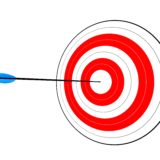How to make your vision a reality!
If you’ve been following along over the last few installments, then you know we’ve been talking about a career vision: what it is, how to create one, and this week, how you can act it to make it a reality. Ideas on paper are one thing, but truly realizing what’s inspiring for you, that’s your ultimate goal!
Your vision is just the start of ideas. They will, like little acorns, be able to take root and grow with the right nurturing. And if you remember at the very beginning of this conversation, I talked about a surprise tip, so here you go: research shows that a vision without a particular component can actually harm your progress. Yes! Leave you in a worse spot than you were in before.
But, there is an antidote, and that is…Action! In a summary of research reported in Psychology Today, they described experiments and studies around the effectiveness of a vision. One article was especially intriguing: “Throw Away Your Vision Board”.
One experiment described in the article, executed at the University of California, studied 2 groups: the first group were asked to spend time each day visualizing what they wanted to get out of a particular semester in terms of grades, and second group were asked to visualize what they hoped to get out of the semester, but to also visualize how they intended to make it happen.
The results? The group that only visualized about their hopes actually studied less and made lower grades than they had before. But the group that visualized both the end game and the action they would take they came out with better grades and were less stressed overall.
Considering this, here are some action strategies to support accomplishing your vision:
-Career Research Interviews: This is where you interview people who are already doing the kind of activity that you have interest in to learn more from an insider’s perspective. You can look for individuals through LinkedIn, for example, who are involved in career activities that are of interest to you and ask if you can interview them about what’s going on in their world related to that, what steps they had to take to make it happen, and what are the pros and the cons.
-Career Experiments: These are short-term, low-risk activities that expose you to areas that you have interest in. That can look like things like practice projects. If you have a bigger project in mind, a bigger goal, and it’s feeling a little overwhelming to you, you might just start by doing something on a super small scale, drawing it out, seeing if you can break it down into a very small activity that would feel comfortable to you. That would be a practice project.
-Classes: One thing I’m working on myself is I want to build my skills as a watercolor painter. This is just a sideline activity for me, but I feel like I’ve exhausted my range of talent with my current skill sets, so I want to take some classes. Classes can be a very comfortable way to help us realize our career vision and make progress.
We have covered today three main categories in this overview around your career vision: What is a vision? What are components of your career vision? And what are action steps you can take to realize your vision? I’ll wrap up here with a quote here. “The journey of a thousand miles begins with a single step.” It’s so important to remember that we have to begin somewhere—to take the first steps.

